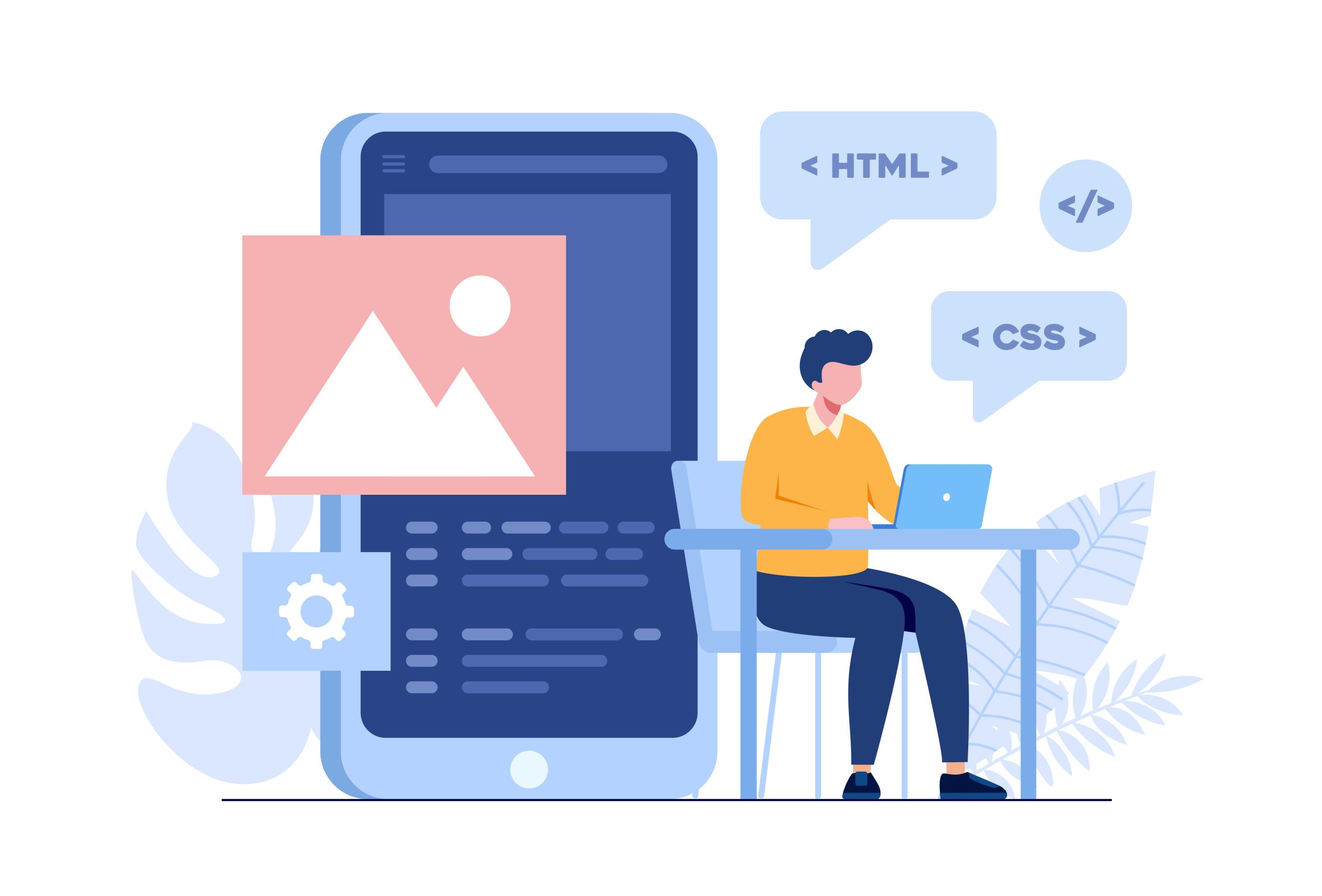CSS represents a style sheet language that functions to describe document presentation in HTML or XML documents. CSS maintains its position as one of the basic technological elements which consists of HTML and JavaScript as foundational elements of the World Wide Web. A complete factual study of CSS exists in this article which reveals its background alongside its working mechanisms and essential elements and its impact on present-day web development.
Introduction to CSS
CSS enables web developers to maintain web page controls for page layouts through color styling and font type selection and design shapings. The purpose of CSS stands in direct contrast to HTML since it handles presentation tasks exclusively while HTML focuses on structural content organization. CSS offers developers the ability to keep web pages up to date more efficiently because design elements are distinct from content elements while providing consistent visual style across multiple web pages.
The developer Håkon Wium Lie created the initial design for CSS in 1994 which has changed substantially during its development timeline. Modern web development requires CSS for responsive design because it enables presentation elements which adjust according to various devices and screen sizes.
The Evolution and History of CSS
Web designers sought improved control of their web page appearance in the middle of 1990s which led to CSS development. A majority of designers used to add styles through inline tagging inside HTML code before CSS existed thus leading to incremental code and inconsistent display maintenance. The introduction of CSS split content from presentation through separate controls which gave users better styling control and design flexibility.
CSS development has risen through multiple versions through time.
- CSS1 (1996): The first official release, which laid the foundation for styling text, fonts, and colors.
- CSS2 (1998): Introduced advanced features such as positioning, media types, and the concept of the cascade, which allows multiple style rules to be applied to the same element.
- CSS3 (1999 and beyond): Divided into modules, CSS3 brought significant enhancements including animations, transitions, flexbox layouts, grid systems, and media queries, which are essential for responsive design.
The successive versions added more attributes with their own features yet they maintained original version compatibility. The continuous evolution of CSS permits its application in modern web environments because the industry’s technical framework along with user demands persist to transform.
Core Principles and Concepts
Separation of Content and Presentation
CSS establishes a core principle that divides content elements in HTML from presentation elements in CSS. The separate organization helps maintain the system better while users gain better access. The division between page content and styles in coding creates an advantage which allows developers to maintain design appearance without changing page structure.
The Cascade and Inheritance
The fundamental principle of Cascading in CSS exists through rules that consider three core factors: importance, specificity and the natural order of HTML elements. Multiple conflicting style rules result in CSS employing these rules for deciding which styles should override others. For example:
- Importance: Inline styles have a higher priority than styles defined in external stylesheets.
- Specificity: More specific selectors (e.g., an ID selector) override less specific ones (e.g., a class selector).
- Source Order: When rules have equal specificity, the rule that appears last in the code is applied.
All properties assigned to parents will transfer inheritance to their child elements. The simplification of styling procedures results from this behavior because it eliminates repeating efforts.
Selectors, Properties, and Values
A CSS rule contains transporter and value declaration parts. The style should apply to particular HTML elements through the selector mechanism. A declaration block contains several declarations where each declaration pairs a property with its corresponding value that specifies what style should be implemented. For example:
p {
color: blue;
font-size: 16px;
}
In this snippet, the selector p targets all paragraph elements, setting their text color to blue and font size to 16 pixels.
Types of CSS
CSS possesses three main implementation techniques such as inline and internal CSS and external CSS.
- Inline CSS: Directly within an HTML element using the
styleattribute. - Internal CSS: Within a
<style>tag in the HTML document’s<head>section. - External CSS: In separate stylesheet files linked to the HTML document via the
<link>tag.
Modern web developers prefer external CSS as their standard approach due to its ability to maintain centralized control which facilitates easier management and update processes.
Responsive Design with CSS
Sharply responsive websites provide critical functionality in contemporary digital platforms. CSS functions as a fundamental design element responsible for allowing web pages to reshape themselves across various display sizes along with different devices. Media queries represent a core component of responsive design since developers can use them to execute different styling conditions which include width specifications and height conditions and device orientations. For example:
@media screen and (max-width: 600px) {
body {
font-size: 14px;
}
}
The 600-pixel-wide screen limitation affects mobile devices to produce an improved user experience through this media query.
Advanced CSS Features
Flexbox and Grid Layouts
The layout modules CSS Flexbox and Grid empower developers to achieve professional designs of intricate web structures.
- Flexbox: Provides a flexible way to arrange items in a container. It is particularly useful for one-dimensional layouts, allowing items to be aligned and distributed along a single axis.
- Grid Layout: Offers a two-dimensional grid-based layout system, which is ideal for creating responsive designs that require precise placement of elements.
The modules function as tools to generate adaptable layouts which automatically respond to various device dimensions and orientation configurations.
Transitions and Animations
Web developers can generate interactive user experiences through CSS without JavaScript dependence because CSS features both transitions along with animations. Through transitions users experience smooth style transitions whereas keyframe animations generate dynamic animations across extended time periods. Web page aesthetics improve thanks to these features which perform efficiently.
Pseudo-Classes and Pseudo-Elements
Semi-recursive logic in CSS allows developers to apply styles through both pseudo-classes and pseudo-elements for element-based and segmented element-based design. For example:
- Pseudo-Classes: Such as
:hoverand:active, which apply styles when a user interacts with an element. - Pseudo-Elements: Such as
::beforeand::after, which allow developers to insert content before or after an element’s content.
Through these selectors CSS developers can achieve more complex and interactive styles for their designs.
Browser Support and Standards
The World Wide Web Consortium (W3C) establishes the standards for CSS to provide consistency between browsers and platforms. Modern CSS standards receive full support from the main web browsers including Chrome and Firefox and Safari as well as Edge and Opera. Web development strategies like progressive enhancement and graceful degradation become essential because some older browsers lack full support of all features.
Best Practices for Using CSS
Developers must follow several best practices for creating efficient and maintainable and scaleable CSS.
- Modular CSS: Break styles into reusable modules or components to promote code reuse and simplify maintenance.
- Avoid Inline Styles: Use external or internal stylesheets instead of inline styles to keep HTML and CSS separate.
- Use Semantic Class Names: Choose descriptive class names that reflect the purpose of the element, enhancing code readability.
- Minimize Redundancy: Avoid duplicate code by utilizing inheritance and cascading properties effectively.
- Optimize Performance: Reduce file sizes by minifying CSS and combining multiple stylesheet files when possible, to enhance load times.
The Role of CSS in Modern Web Development
The creation of aesthetic and functional web pages heavily depends on the application of CSS. Separating content from presentation within CSS leads to better codebase organization together with simpler code maintenance mechanisms. Mobile internet usage growth prompted CSS development into responsive design capabilities so websites function perfectly on every device.
The modern web development process benefits from CSS frameworks and preprocessors including Bootstrap and Tailwind CSS as well as Sass and LESS by providing developers with pre-made components and features. Through these tools developers acquire abilities to create more effective modular CSS that functions the same way as traditional CSS coding methods.
Conclusion
Web design developers use CSS as their essential technological foundation to achieve efficient control over web page visual presentation. Since its introduction in the mid-1990s until its current version with advanced components including Flexbox and Grid and animations along with media queries CSS has advanced to satisfy contemporary web development needs. The technology divides content elements from presentation elements while enabling adaptive design and delivering various capabilities to boost user interface quality.
Web developers who understand CSS strengthen both their website design presentation and overall performance and accessibility while improving its maintainability. Modern web applications with best practice implementation using current CSS features enable developers to build visually stunning websites that address diverse digital needs.
The discussion on CSS demonstrated its fundamental parts together with its evolution and best methods for web development implementation. CSS functions as a key fundamental technology which maintains the visual structure of web platforms thus providing attractive usability that works across all devices and platforms.


